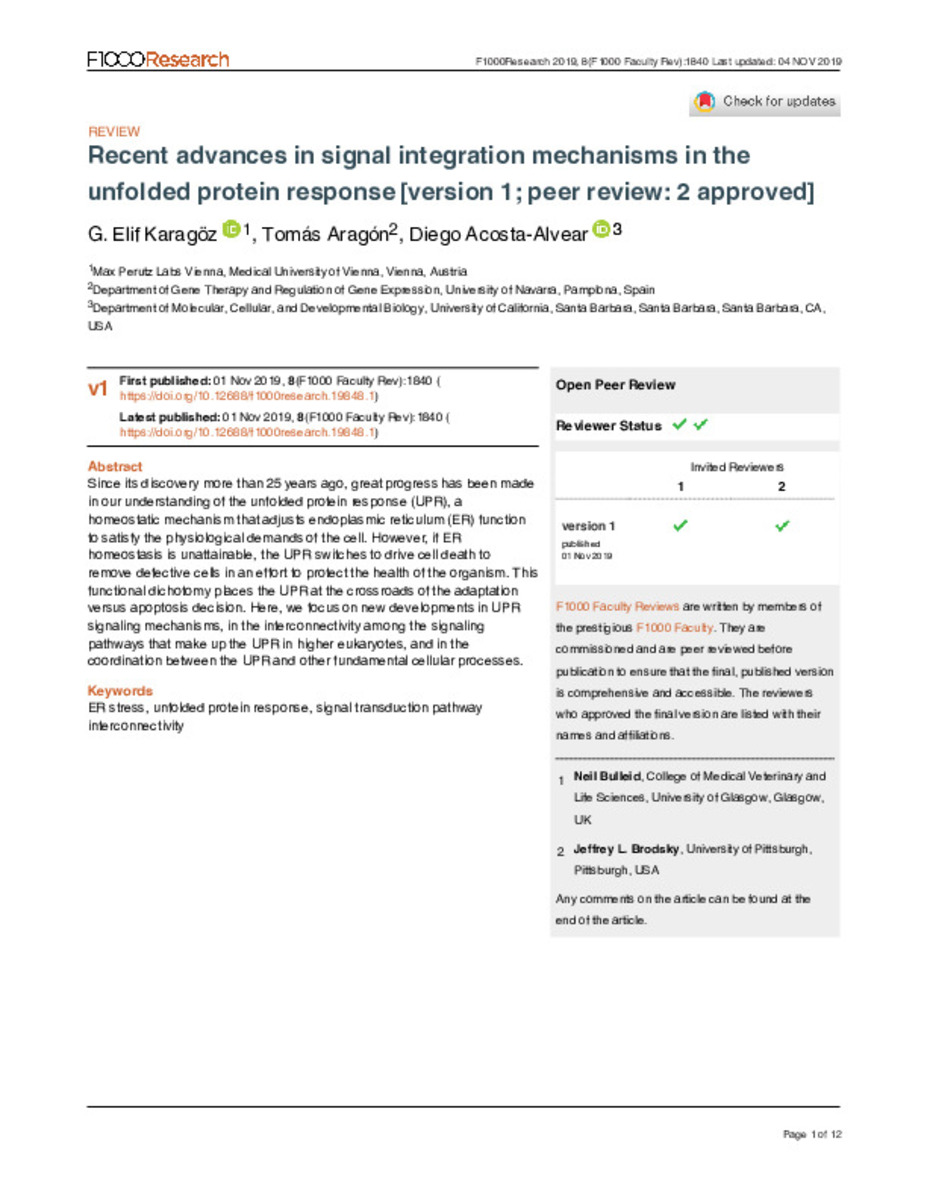Recent advances in signal integration mechanisms in the unfolded protein response [version 1; peer review: 2 approved]
Palabras clave :
ER stress
Unfolded protein response
Signal transduction pathway interconnectivity
Fecha de publicación :
2019
Editorial :
Taylor & Francis
Nota:
This is an open access article distributed under the terms of the Creative Commons Attribution License, which permits unrestricted use, distribution, and reproduction in any medium, provided the original work is properly cited.
Cita:
Karagöz, G.E. (Gulsun Elif); Aragón-Amonárriz, T. (Tomás); Acosta-Alvear, D. (Diego). "Recent advances in signal integration mechanisms in the unfolded protein response [version 1; peer review: 2 approved]". F1000Research. 8, 2019, 1840
Aparece en las colecciones:
Estadísticas e impacto
0 citas en

Los ítems de Dadun están protegidos por copyright, con todos los derechos reservados, a menos que se indique lo contrario.







